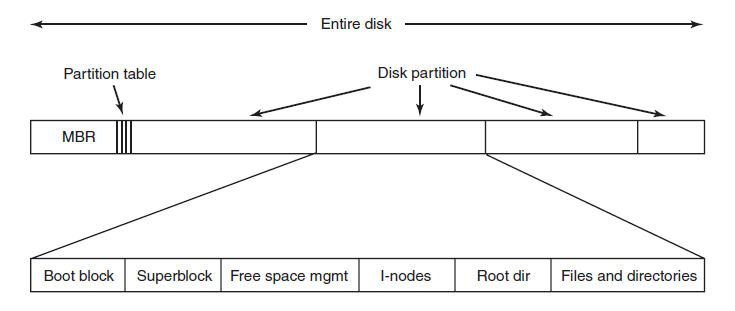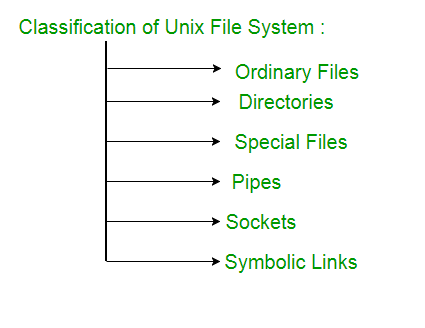Table of Contents
PC running slow?
tmpfs may be the temporary file storage paradigm used by many Unix-like operating systems. It should definitely look like an installed Instigate system, but the data is stored in fragile storage rather than a persistent storage device.
“Unix Directory System” redirects here. For information about UFS, the user-defined file system used by many Unix and Unix-like operating systems, see The Unix File System.
In Unix and internal systems, the file system is considered an important component of system operations.[1] It was also one of the first parts of the system to be designed and implemented. . Ken Thompson in Unix trial and error, dated 1969.[2]
As with many operating systems, the file system provides storage and retrieval of information, as well as one of many modes of interprocess communication, since a growing number of small programs that traditionally make up a Unix system can store information in files in electronic form. since other programs can read, you can do them, although Pipes complements them in this role to run withthird edition. In addition, this particular file system provides access to other resources, including so-called device files, which are entry points for using terminals, printers, and mice.
The rest of the articles of this type use Unix as a universal store to refer to both the original Unix operating system and many of its equivalents. file system
Principles
What file system does Unix use?
Unix uses a new filesystem hierarchical structure, much like the new inverted tree structure, with a root (/) at each filesystem base and each of the other directories expanding from there. It provides the root directory (/) which contains all other files and directories.
This appears to be a root tree associated with directories.[1] Instead of referring to individual volumes such as hard disk partitions, removable media, and network security as separate trees (like on DOS and Windows : each drive has a generation letter indicating the root of its own file system tree), such volumes can be mounted into a directory by opening the underlying volume’s file system tree, like most directories in a larger tree.[1] The reason for the entire tree is marked with /.
As you can see, the original Bell Labs A Unix two-disc method was conventional: the first CD contained the boot programs and the second contained the user.Russian files and programs. This second drive was mounted to an empty directory named usr on the first drive, causing both drives to appear as any file system, and the contents of the second drive starting with /usr . .catalogues
What is memory file system?
An in-memory file system. File s Storage systems are useful for supporting caches, temporary storage of data, unit testing, etc. Since all data is in a storage area, this is very fast, but short-lived.
Unix does not contain files. Instead, they contain files of partner names with links to so-called inodes, which in turn contain both the file and its metadata (ownership, permissions, last found time, etc., but not the name). Multiple names in a file can refer the system to the same file, a feature known as tedious linking.[1] The mathematical properties of hard links make the file system a limited means of writing for acyclic graphic addresses, web site directories . always form a tree because most of the time they are unrelated. (As originally envisioned in 1969, the Unix file system is likely to be used as a regular graph, with hard links to directories requiring navigation rather than paths.[2])
File Types
Original fa l Unix supported three types of file systems: regular files, directories, and “special files” that might have been called device files.[1] Berkeley Software Distribution (BSD) and Each of System V specifies file type to use for interprocess communication: BSD added sockets,[3] The long running System V added FIFO files.
PC running slow?
ASR Pro is the ultimate solution for your PC repair needs! Not only does it swiftly and safely diagnose and repair various Windows issues, but it also increases system performance, optimizes memory, improves security and fine tunes your PC for maximum reliability. So why wait? Get started today!

BSD also added conspicuous links (often referred to as “symbolic links”) in the filetype area, i.e. files pointing to other files and completing hard links.[3] Symbolic links were simulated after simulation. have similar functionality to multics,[4] and differ from complex links in that they can span filesystems and that their existence does not depend on any target. Other Unix systems may support additional file types.[5]
Traditional Address List Layout
What is tmpfs and Devtmpfs?
It uses RAM, it could be “tmpfs”, temporary RAM file system. devtmpfs is a true file system managed by the automated electronic device node kernel. tmpfs is a RAM disk. Google is really your friend here.
There are specific rules for searching certain types of files, such as programs, system configuration files, and user home directories. For the first time they weredocumented on the man page here(7) for Unix version 7; [6] later versions, derivatives and clones usually have the same man page URL.[7][8][ 9][10][11] [12]
Over time, the information in the layout catalog has become multi-dimensional. Although the layout of file system page elements is not part of the UNIX Qualified Persons specification, there are several attempts to (partially) standardize it, such as the Linux Foundation File System Hierarchy Standard (FHS).[13]< / top >
Is RAM a file system?
The RAM file system that is part of the Snow image resides entirely in memory and contains virtual programs that allow the boot process to continue. System RAM data files depend on the type at startup.
Here is a general overview of the common locations associated with files in the Unix operating system:
| directory or file | Description |
|---|---|
/ |
The slash / by itself points to the root of the file system tree. |
Represents many binaries and contains some basic utilities such as ls or cp that are needed to mount /usr when it is standalone important file system, or to run in single user mode (administrative mode)if /usr then fails to mount. In System V.4, this is a very symbolic link to /usr/bin. Otherwise, the filesystem itself must be created as root. |
|
| Contains all file types required for a successful upload. In Research Unix, it was a file, not a directory.[14] Generally today, all root filesystems other than system, bootloader startup, etc. otherwise require it. | |
| Represents devices. Contains graphic representations of devices and pseudo-devices. See also: Managing Linux Assigned Names and Numbers. Must be on the original file system itself. | |
Contains system-wide configuration files and regular databases; name means and so on [14], but now it’s better to expand editable text configurations. [6] but usually they went to /sbin or somewhere else. There should be more on the root filesystem itself. |
|
Contains your Linux user home directories andseveral other components. In original Unix, home directories were located in /usr.[15] Some devices still use or have different locations: on macOS, home directories are in /Users. , some older versions of BSD put them if /u, FreeBSD has /usr/home. |
|
Originally required C libraries: collections, but not Fortran libraries.[14] On today’s systems, it contains common libraries used by programs in /bin . built-in and optionally loaded kernel elements or device drivers. Linux distributions may have /lib32 and /lib64 variants to support multiple architectures. |
|
| Default mount point for removable media, sorted by keys, USB drives, etc. Common sense is that the directory itself is at the root of your current partition, where subdirectories are mount points. |

